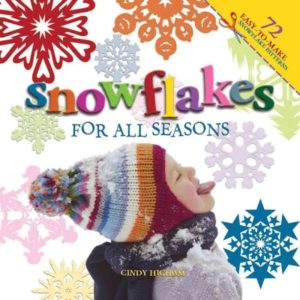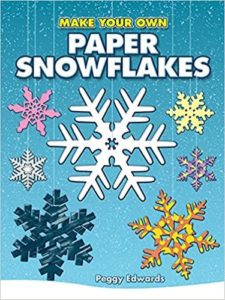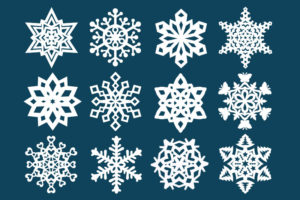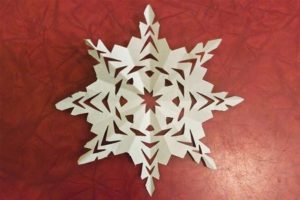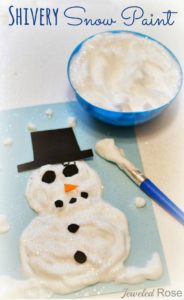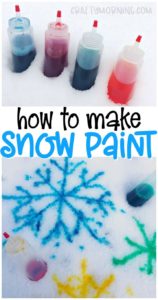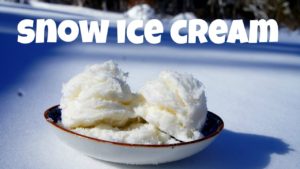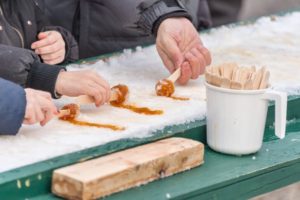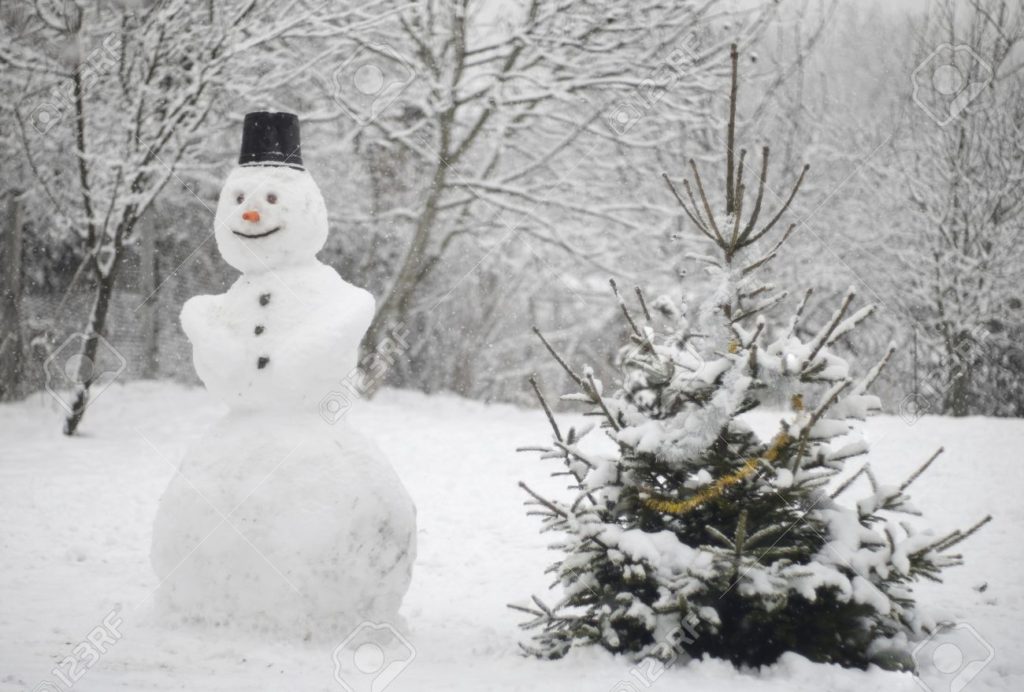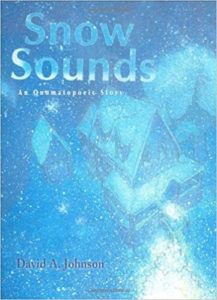
|
David A. Johnson’s beautifully illustrated Snow Sounds: An Onomatopoeic Story (Houghton Mifflin, 2006) is written entirely in onomatopoeia, from the first scenes of a little boy asleep in bed with his cat {“snore” and “purr”) to the sound of falling snowflakes (“peth peth peth”) to the noisy arrival of the snowplow (“crash crush clank”). For ages 4-7, all of whom will love learning the word “onomatopoeia.” |
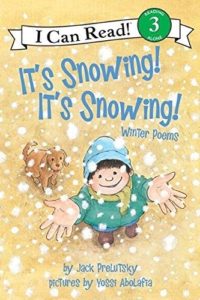
|
Jack Prelutsky’s It’s Snowing! It’s Snowing! (HarperCollins, 2006) is an illustrated collection of sixteen snowy poems, among them “Winter Signs,” “My Sister Would Never Throw Snowballs at Butterflies,” and “The Snowman’s Lament.” For ages 4-9. |
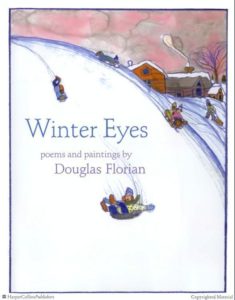
|
Douglas Florian’s Winter Eyes (Greenwillow, 1999) is an illustrated collection of 28 short clever rhyming poems (including “What I Love About Winter” – “Snowball fights/Fireplace nights” – and “What I Hate About Winter” – “Frozen toes/Running nose”). Try some of your own. For ages 6-10. |
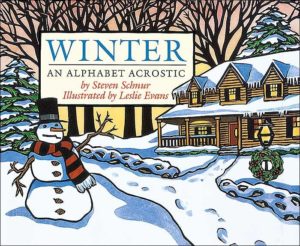
|
Steven Schnur’s Winter: An Alphabet Acrostic(Clarion Books, 2002) is a playful collection of 26 acrostic poems arranged alphabetically – they’re fun to read and almost certain to inspire young writers to try versions of their own. For ages 6-10. |
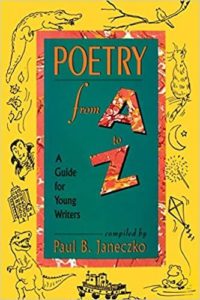 |
Paul B. Janeczko’s Poetry from A to Z (Simon & Schuster Books for Young Readers, 2012) is a collection of alphabetized examples, suggestions, and projects for would-be poets. Kids try acrostics, clerihews, list poems, memory poems, shape poems, and much more. Under “How-to Poems,” see Ralph Fletcher’s “How to Make a Snow Angel.” For ages 9 and up. |
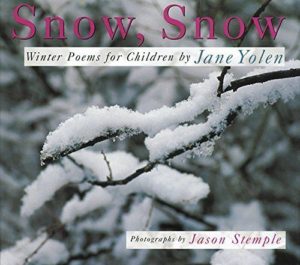
|
Jane Yolen’s photo-illustrated Snow, Snow: Winter Poems for Children (Wordsong, 2005) is a collection of Yolen’s own winter poems (among them a tribute to a snowmobile). For ages 9-12. |
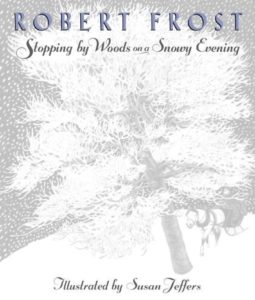
|
Robert Frost’s Stopping by Woods on a Snowy Evening (Dutton Juvenile, 2001), exquisitely illustrated by Susan Jeffers, is a beautiful picture-book version of the classic poem. For all ages. |
|
Ralph Waldo Emerson’s poem “The Snow-Storm” can be found here. (“Announced by all the trumpets of the sky/Arrives the snow…”) |
|
Robert Frost’s poem “Dust of Snow” can be found here. |
|
Billy Collins’s poem “Snow Day” (“Today we woke up to a revolution of snow…”) can be found here. |
|
Henry Wadsworth Longfellow’s poem “Snow-flakes” (“This is the poem of the air…”) can be found here. |
